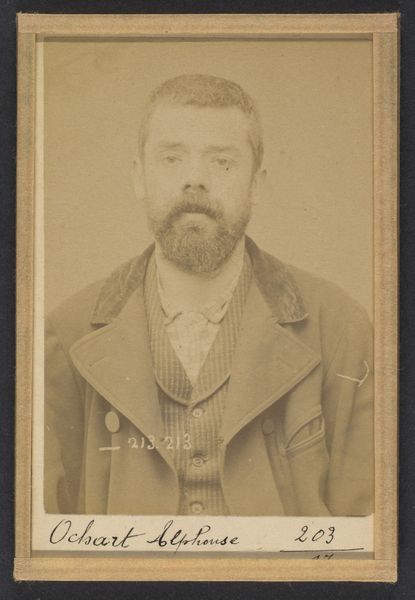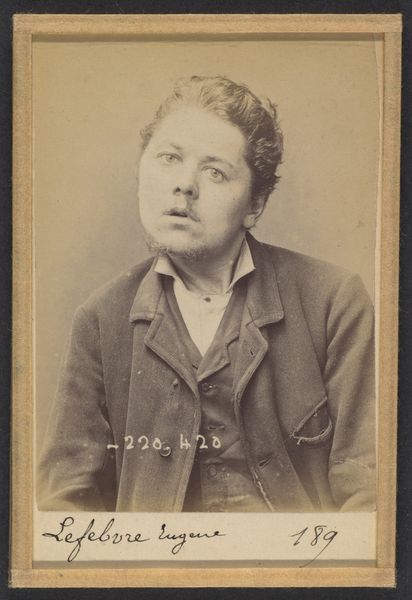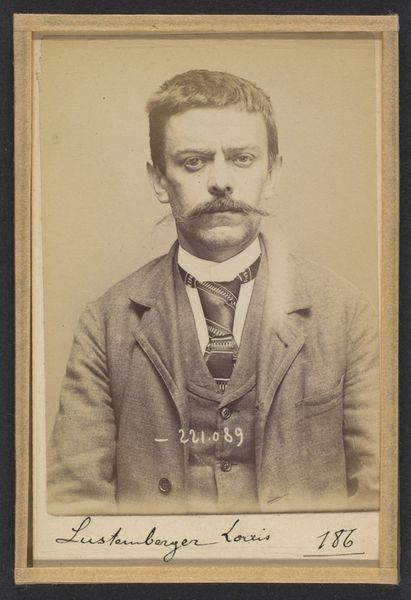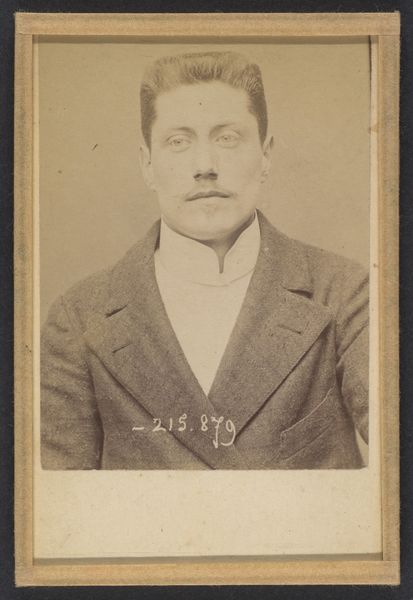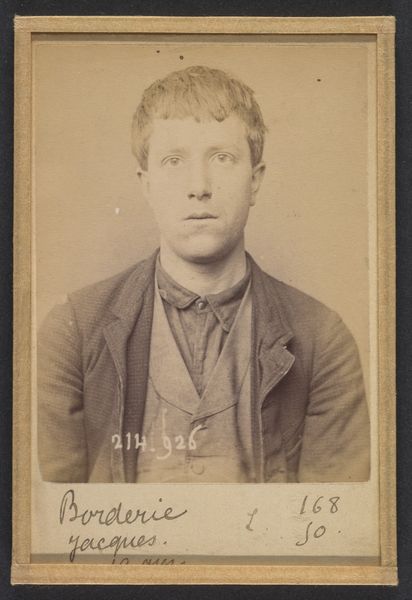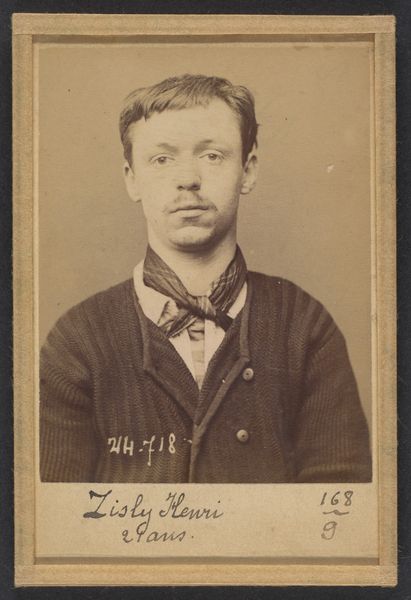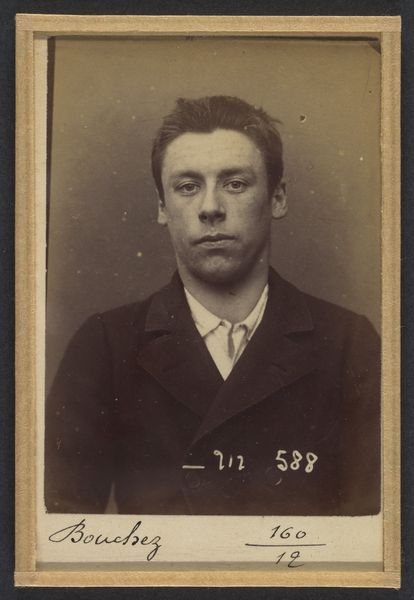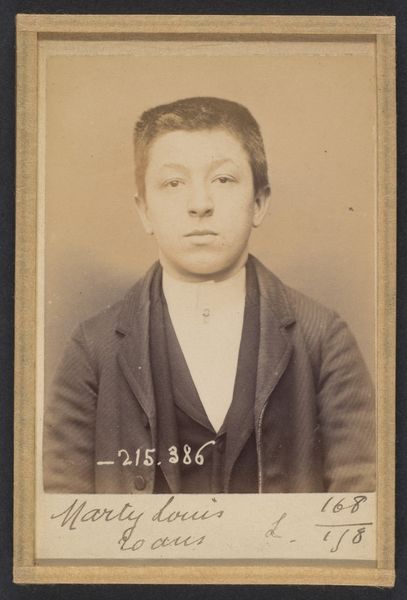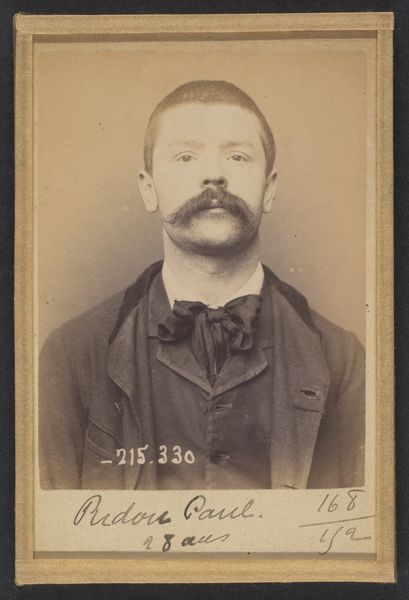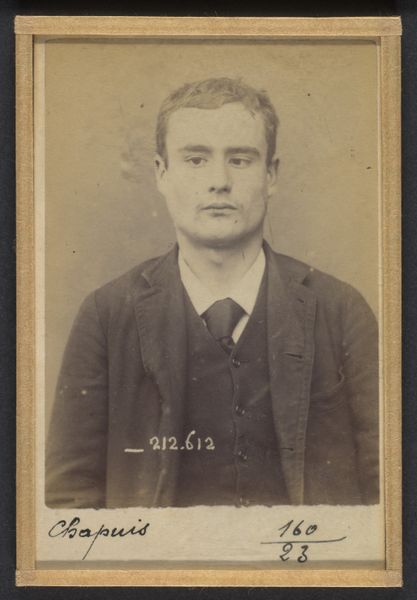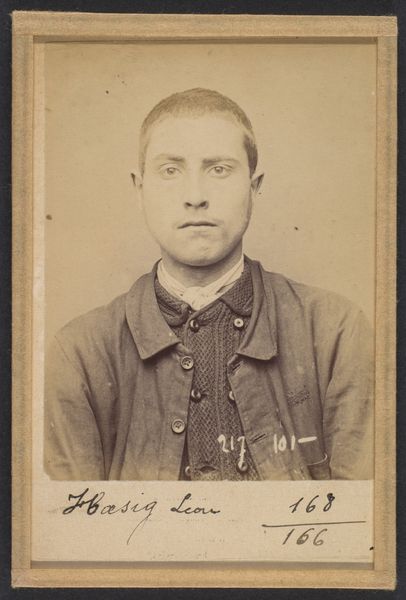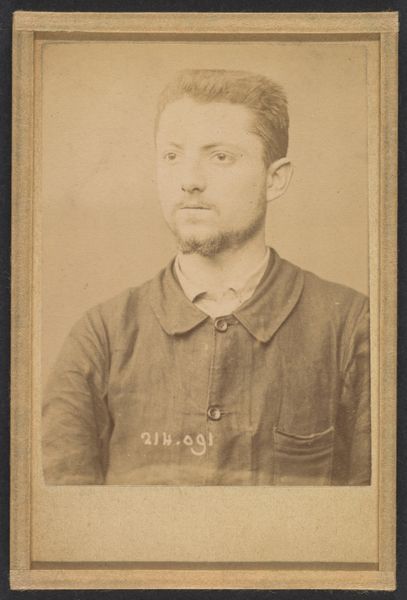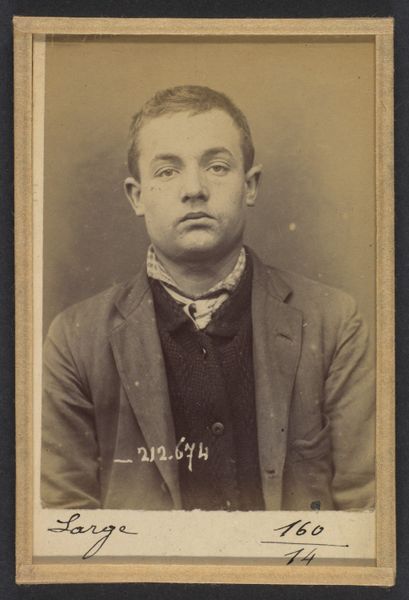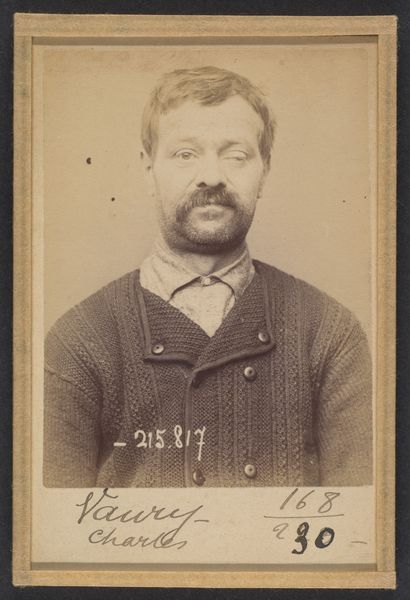
Lamure. Eugène, Clément. 20 ans, né le 5/11/73 à Paris Ier. Gérant de magasin. Anarchiste. 2/7/94. 1894
0:00
0:00
photography
#
portrait
#
portrait
#
photography
#
realism
Dimensions: 10.5 x 7 x 0.5 cm (4 1/8 x 2 3/4 x 3/16 in.) each
Copyright: Public Domain
Curator: Standing before us is a photograph by Alphonse Bertillon, titled "Lamure. Eugène, Clément. 20 ans, né le 5/11/73 à Paris Ier. Gérant de magasin. Anarchiste. 2/7/94." It dates from 1894. Editor: The subject’s gaze is direct and unnerving. There’s a profound sadness, maybe even defiance, radiating from his eyes. The muted tones amplify the somber mood. Curator: Bertillon’s approach to photography was less about art and more about scientific documentation, part of a broader effort in the late 19th century to categorize and control the burgeoning urban populations. It's interesting that Bertillon, using the supposed objectivity of science, also identified Lamure as an Anarchist in the photo's title. This inherently imbues the photograph with political connotations. Editor: Absolutely, this image serves as a stark reminder of how easily individuals and their identities can be politicized and categorized, often unjustly. It makes you consider the precariousness of freedom and dissent then, and now. Curator: Bertillon developed the "portrait parlé," a verbal description system coupled with standardized photography to identify repeat offenders. These images were instruments of power, serving to surveil and manage individuals deemed outside the norm. They were tools of the state. Editor: Precisely, seeing the label “anarchist” transforms this portrait into more than just a record. It hints at the socio-political anxieties of the time. What did being an anarchist mean for Eugène Lamure, beyond being a store manager? How did that label shape his life? Curator: Exactly. And the composition, though seemingly simple, emphasizes this sense of control. The tight framing, the plain background – all contribute to the subject's vulnerability before the law. Even his clothes are a social statement - this is no ragged revolutionary, he’s a petit bourgeois. Editor: Thinking about today, it speaks to the surveillance society, how biometrics and algorithms classify and sometimes misclassify, entire populations. Curator: Indeed. Bertillon’s project raises serious questions about the power of visual representation and the ethics of control. Editor: The photograph prompts us to consider the cost of dissent and the importance of protecting individual liberties. Curator: It’s a hauntingly beautiful piece that reflects anxieties about shifting social orders.
Comments
No comments
Be the first to comment and join the conversation on the ultimate creative platform.
